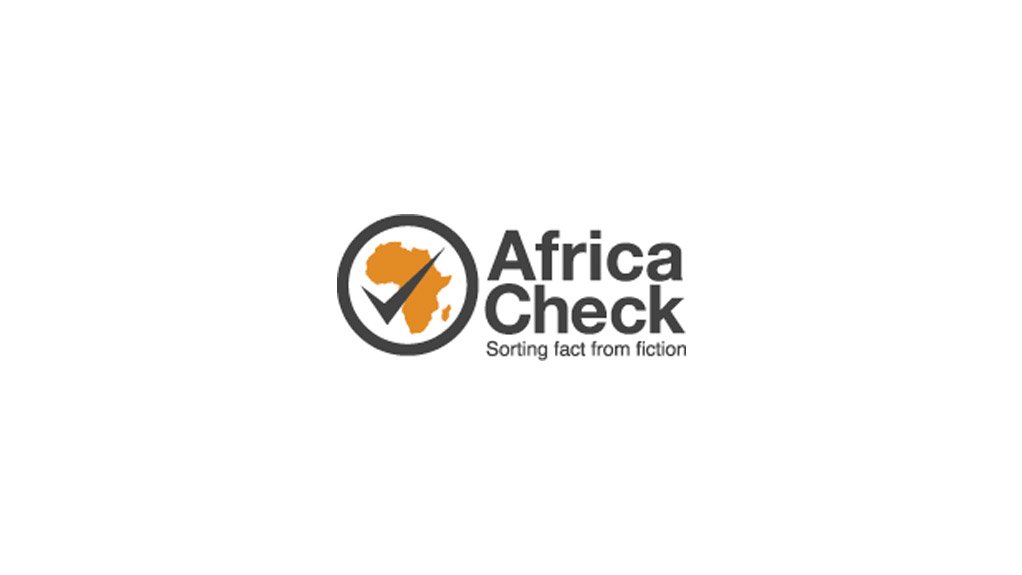Writing about the impact of invasive alien plants on South Africa’s waterways, a local news site recently reported that the country has “less water available per person than Botswana and Namibia”.
The department of environmental affairs was cited as the source of the claim. However, the department’s chief director for communications, Albi Modise, told Africa Check that he “didn’t know of such a report”, but would look and get back to us. (Note: At the time of publishing, Modise hadn’t responded. We’ll update this report should he do so.)
A cursory look at Google search results shows that the claim appears in reports from the department of water and sanitation, but these provide no source or data to support it.
Without a source, we turned to experts to help find the best comparative data with which to verify the claim.
SA: Most renewable freshwater resources by far
Kirsty Carden, a research officer in the urban water management research unit of the University of Cape Town’s civil engineering department, told us the phrase “less water available per person” is open to interpretation.
“In this instance, I assume that the authors are referring to the overall availability of freshwater resources within a region or country,” she said.
To get an idea of this, a measure such as renewable internal freshwater resources per person would need to be considered, Carden said. This gauges how much freshwater a country receives from rivers, groundwater, rainfall and other sources. (Note: It excludes the volume of water contained in dams, which are fed by rainfall.)
The United Nations Food and Agriculture Organisation’s data shows that South Africa has by far the most renewable freshwater resources (44.8 billion m³) compared to Botswana and Namibia. (Note: To put it into perspective, 44.8 billion m³ is about a quarter the capacity of Africa’s largest dam, Kariba.)
| Renewable freshwater resources | ||
| Total (billion m³) | Per capita (m³) | |
| South Africa (2013) | 44.8 | 822.2 |
| Namibia (2002) | 6.16 | 2,505 |
| Botswana (2000) | 2.4 | 1,061 |
Source: UN Food and Agriculture Organisation
While data for Botswana and Namibia is dated, Anton Earle, the Stockholm International Water Institute’s Africa region director, told Africa Check the figures would still be relevant as “the amount of water available as an absolute figure would not change much over time – unless the impacts of climate change become really pronounced”. An update of the figures every decade would be ideal, Earle noted.
The small populations of Botswana and Namibia result in South Africa having the lowest quantity of freshwater per inhabitant.
For every person in South Africa, the country had 822.2 m³ of freshwater available at last count, compared to 1,061 m³ per resident of Botswana and 2,505 m³ for each resident of Namibia. (Note: 2,505 m³ is about the volume of an Olympic size swimming pool.)
Agriculture guzzles up most water
“These figures provide an indication of how water ‘rich’ or ‘poor’ a country is,” Carden told Africa Check. “In this regard, South Africa is considered to be the most vulnerable compared to Botswana and Namibia.”
But that doesn’t mean that residents of Botswana and Namibia use more water domestically, she added. Agriculture guzzles up most of the three countries’ freshwater, FAO water withdrawal figures show.
South Africa withdrew the most freshwater (15.5 billion m³) between the three countries in 2013. This went to:
- agriculture (62.52%, or 9.69 billion m³),
- domestic use (27%, 4.19 billion m³),
- industry (10.48%, 1.63 billion m³).
Figures for Namibia and Botswana show that they withdraw 0.29 billion m³ and 0.19 billion m³ per year respectively.
| Annual freshwater withdrawal | ||||
| Agriculture | Domestic | Industry | Total (billion m³) | |
| South Africa | 62.52% | 27% | 10.48% | 15.5 |
| Namibia | 69.79% | 25.35% | 4.86% | 0.288 |
| Botswana | 41.24% | 40.72% | 18.04% | 0.194 |
Source: UN Food and Agriculture Organisation
Incomplete picture of water situation
Earle cautioned that figures like these don’t provide a complete picture of a country’s water situation.
“They don’t tell us much about conditions in the country (climatically) nor much about the accessibility of water in the country,” Earle noted.
“For example, Namibia has quite some water resources available. However, that water is located in the far north of the country, while the capital city and greatest driver of water demand (Windhoek) is over 1,000 km south. This makes it extremely difficult to access the water.”
Access to water in Botswana would also be difficult as much of the country’s water would be in deep aquifers, Earle told Africa Check.
“You also need to factor in to what degree the available water supplies are shared with other countries,” Earle said, since international law recognises the fair and reasonable sharing of water resources. “This limits the development options of a country.”
Conclusion: The claim is correct
A local South African news outlet recently published that the country has less water available per person than Botswana and Namibia. Data from the United Nations’ Food and Agriculture Organisation show the claim checks out.
While the country has the most freshwater available in total, its large population compared to Botswana and Namibia results in less water available per resident (822.2 m³).
Figures like these give us an idea how vulnerable a country is water-wise, but it doesn’t reveal much about access to water or other country conditions, experts cautioned.
Researched by Gopolang Makou, Africa Check. This report was written by Africa Check, a non-partisan fact-checking organisation. View the original piece on their website
EMAIL THIS ARTICLE SAVE THIS ARTICLE
To subscribe email subscriptions@creamermedia.co.za or click here
To advertise email advertising@creamermedia.co.za or click here











